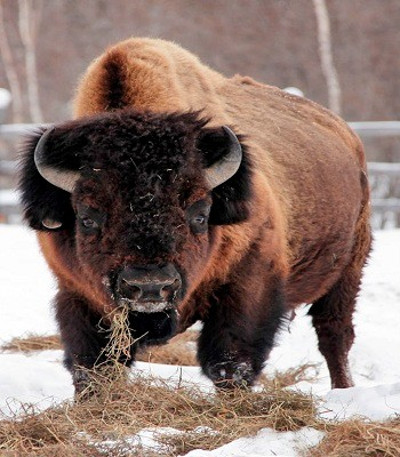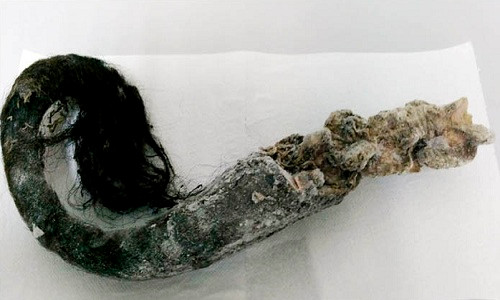Tail pieces can help revitalize extinct bison 12,000 years
An international team of scientists plans to revive the extinct ancient bison more than 11,700 years ago based on DNA taken from the remaining tail bone.

Steppe wild cattle extinct at the beginning of the whole Tan.(Photo: Maria Vasilyeva.)
Russian and Korean scientists are collaborating on an ambitious project to revive the extinct prairie bison, the International Business Times reported on Monday. They plan to take DNA from the ancient dorsal caudal fin preserved under the permafrost in Siberia for many years, to clone this animal.
The two meter high prairie cow, weighing 900 kg, is thought to be extinct at the beginning of the entire Tan, the period that began 11,700 years ago, after wandering the prairies of the west and east of Europe, Central Asia and Japan. Copy and northwest Canada. In August 2016, a piece of prairie bison was found in the Sakha Republic, belonging to the Indigirka river basin.
Although more tests are needed to identify the chronological age, Dr. Semyon Grigoryev, director of the Mammoth Museum at Northeast Federal University, the head of the project, said the specimen had little life expectancy. most over 8,000 years.
The idea of reviving an extinct ancient creature during the millennium seems impossible, but scientists are convinced that this may become a reality in the near future. They are trying to clone the Canadian bison for the first time, using a pregnant cow. If successful, cloning among species will prove to be feasible.

The prairie oxtail is preserved under permafrost.(Photo: Maria Vasilyeva).
" Our Korean colleagues have the experience of replicating cows. We decided to use a pregnant cow. This does not affect the results much. If the experiment is successful, the ability of The calf is 99.8%, " Grigoryev said. " The important thing for our ancient animal cloning project is to overcome barriers between species. No one has done this yet. Successful cloning among species will bring hope back. animal extinction and conservation of endangered species ".
In addition to the human goal, the research team also made several theories about the outcome of the steppe-buffalo steppe. Most likely the rest of the body has been eaten by predators."Based on the nibbling tail base, the bison can be a victim of predators such as lions or cave bears, " Grigoryev commented.
- Reviving the 1.500kg extinct bison, 400 years old
- Cranial mountain exposed the great massacre of bison
- What do archaeologists do when they discover a 36,000-year-old wild cow mummy?
- The assertive cave picture on Earth once existed in the hybrid bison
- The mystery of where plants are buried for hundreds of years can still be revived
- Intact wild boar buried 10,000 years
- German police shot rare cows 250 years a time
- Revive the extinct oral toad
- Bison cows re-export in the US National Park
- From the bison, learn more about the first person to set foot in America
- The world's largest cow population is threatened
- Detecting giant dinosaur tails dating back 72 million years
 Animal 'suffering' after hibernation
Animal 'suffering' after hibernation Why do goats climb well?
Why do goats climb well? Scientists were surprised to see chimpanzees eating turtles
Scientists were surprised to see chimpanzees eating turtles Giant catfish died deadly due to drought in Thailand
Giant catfish died deadly due to drought in Thailand